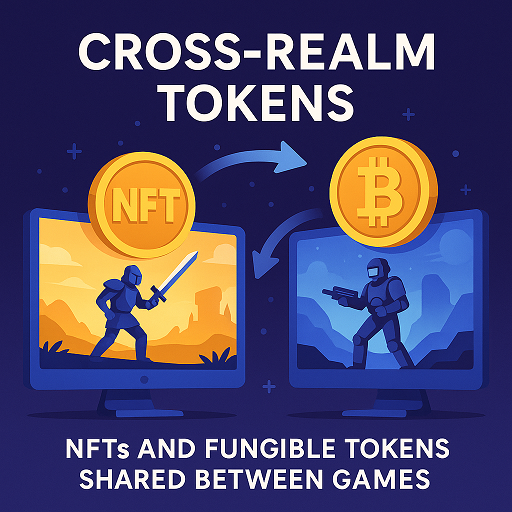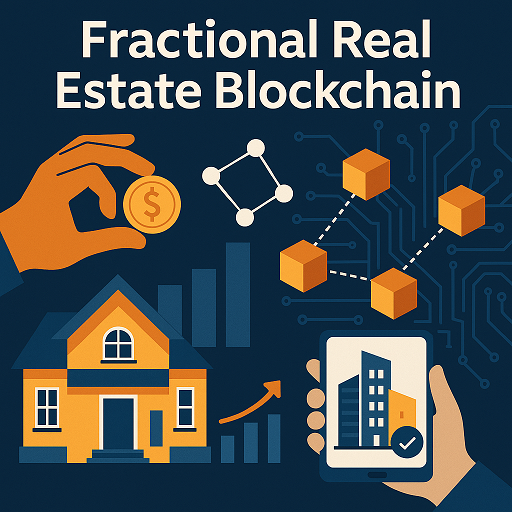Introduction
Cross-Realm Tokens describe a paradigm that the gaming industry is evolving rapidly, fueled by technological advancements and the growing popularity of blockchain-based assets. One of the most intriguing innovations in this space is the concept of tokens that transcend individual game ecosystems. These tokens, whether non-fungible (NFTs) or fungible, enable players to carry their digital assets across multiple games, creating a more interconnected and immersive gaming experience.
In this article, we will explore the mechanics, benefits, challenges, and future potential of these shared digital assets, collectively referred to as Cross-Realm Tokens.
The Emergence of Interoperability in Gaming
Traditionally, in-game assets have been confined to their respective game environments. A sword earned in one game could not be used in another, no matter how similar the two might be. This siloed approach limited the value and utility of digital items.
Blockchain technology, however, has introduced the concept of interoperability. By tokenizing game assets on public blockchains, developers can enable these items to function across different platforms. This is the foundation of Cross-Realm Tokens, which facilitate the seamless movement of assets like skins, characters, weapons, and currencies between virtual worlds.
Understanding NFTs and Fungible Tokens in Cross-Game Contexts
Before diving into the application of Cross-Realm Tokens, it’s essential to distinguish between NFTs and fungible tokens:
- Non-Fungible Tokens (NFTs): Unique digital assets with distinct characteristics and metadata. In gaming, NFTs often represent exclusive items, avatars, or collectibles.
- Fungible Tokens: Interchangeable units of value, like in-game currency or utility tokens, that hold the same value across different instances.
Both types of tokens play a critical role in enabling cross-game interoperability. NFTs provide uniqueness and identity to assets, while fungible tokens ensure fluidity in economic transactions across games.
Cross-Realm Tokens as a Bridge Between Gaming Universes
The core function of Cross-Realm Tokens is to act as a bridge, allowing assets to travel from one game realm to another. This concept mirrors the idea of cross-platform play but extends it to the ownership and usability of digital assets.
For example, a player might acquire a rare NFT sword in a fantasy role-playing game. Through Cross-Realm Tokens, that same sword could be rendered and used in a sci-fi shooter, with its attributes adapted to fit the new game’s mechanics. Similarly, fungible tokens earned in a strategy game could be spent in a racing game, fostering a unified economy.
Benefits of Cross-Realm Tokens for Players and Developers
The implementation of Cross-Realm Tokens offers numerous advantages:
Enhanced Player Engagement
When players know their hard-earned assets are not confined to a single game, they are more likely to invest time and resources. The possibility of using their favorite items across multiple titles adds significant emotional and financial value.
Expanded Game Economies
For developers, shared tokens can create a larger, more vibrant economy. By tapping into the user base of other games, developers can attract new players and encourage spending.
Collaborative Development Opportunities
Game studios can collaborate, creating interconnected game worlds that share assets and economies. This can lead to innovative cross-promotional events and shared lore, enriching the player experience.
True Digital Ownership
Blockchain-based tokens grant players true ownership of their digital assets. Cross-Realm Tokens amplify this benefit by ensuring these assets retain their value and utility across multiple games.
Technical Challenges in Implementing Cross-Realm Tokens
Despite the exciting prospects, the integration of Cross-Realm Tokens comes with significant technical hurdles:
Standardization of Assets
Games differ in art styles, mechanics, and asset specifications. Creating standardized token formats that can be seamlessly integrated across diverse game engines is a formidable challenge.
Scalability and Performance
Public blockchains often face scalability issues. High transaction fees and slow processing times can hinder the seamless transfer of assets between games, affecting user experience.
Security and Fraud Prevention
Cross-Realm Tokens increase the complexity of digital asset management. Ensuring the security of these assets and preventing fraud requires robust smart contracts and anti-cheat mechanisms.
Intellectual Property Rights
Allowing assets to move between games raises questions about intellectual property and licensing. Clear agreements and legal frameworks are essential to protect the rights of developers and content creators.
Notable Projects Exploring Cross-Realm Tokens
Several blockchain gaming projects are pioneering the concept of shared assets:
Enjin
Enjin provides a blockchain-based platform for creating and managing NFTs that can be used across multiple games. Their ecosystem supports asset interoperability and aims to simplify the integration process for developers.
The Sandbox and Decentraland
While primarily focused on virtual worlds, these platforms have laid the groundwork for asset interoperability, allowing NFTs like wearables and land parcels to hold value across different experiences.
Gala Games
Gala Games is developing a network of blockchain games where certain NFTs and tokens can be used across titles, fostering a shared economy and community.
Cross-Realm Tokens and the Future of the Metaverse
The concept of the Metaverse—a persistent, shared digital universe—is intrinsically linked to Cross-Realm Tokens. In a true Metaverse, assets and identities must transcend individual applications. Cross-Realm Tokens provide the infrastructure for such fluidity, enabling a player’s digital persona and possessions to persist across various virtual environments.
As the Metaverse evolves, we can expect Cross-Realm Tokens to play a pivotal role in ensuring continuity and coherence in user experiences.
Economic Implications of Cross-Realm Tokens
The economic impact of shared tokens extends beyond gaming. They introduce new monetization models, such as:
- Play-to-Earn Across Games: Players can earn tokens in one game and spend or trade them in another, creating diverse earning opportunities.
- Cross-Game Marketplaces: Decentralized marketplaces can emerge, where players buy, sell, and trade assets usable in multiple games.
- Creator Economies: Artists and developers can design assets that are compatible with multiple games, opening up new revenue streams.
These dynamics blur the lines between gaming, investing, and content creation, transforming players into active participants in digital economies.
Social and Cultural Impact of Cross-Realm Tokens
Beyond economics, Cross-Realm Tokens influence the social fabric of gaming communities:
- Persistent Digital Identities: Players can maintain consistent avatars and reputations across games, enhancing social bonds and community identity.
- Collaborative Storytelling: Shared assets enable collaborative narratives where events in one game impact the lore of another, fostering a sense of shared history.
- Inclusive Gaming Ecosystems: By lowering the barriers to asset acquisition and usability, Cross-Realm Tokens can make gaming more inclusive and accessible.
Regulatory Considerations for Cross-Realm Tokens
As with all blockchain-based innovations, regulatory clarity is crucial. Authorities worldwide are grappling with how to categorize and oversee digital assets. Cross-Realm Tokens add layers of complexity, especially concerning:
- Digital Asset Classification: Determining whether shared tokens are collectibles, securities, or utilities.
- Consumer Protection: Ensuring players are safeguarded against fraud and unfair practices.
- Tax Implications: Addressing the taxation of earnings from cross-game asset trading and usage.
Proactive engagement with regulators and adherence to emerging standards will be vital for the sustainable growth of Cross-Realm Tokens.
The Road Ahead: Challenges and Opportunities
The journey toward widespread adoption of Cross-Realm Tokens is still in its early stages. Key milestones for the future include:
- Development of Universal Standards: Industry-wide agreements on token formats, metadata, and integration protocols.
- Improved Blockchain Infrastructure: Solutions for scalability, such as Layer-2 protocols and sidechains, to ensure smooth asset transfers.
- Increased Developer Collaboration: Partnerships between game studios to create shared ecosystems and promote interoperability.
- Enhanced User Experience: Simplifying the process for players to manage and transfer assets between games.
While challenges remain, the opportunities are immense. Cross-Realm Tokens have the potential to revolutionize not just gaming but the broader digital economy.
Conclusion
Cross-Realm Tokens represent a paradigm shift in how digital assets are perceived and utilized. By breaking down the walls between isolated game worlds, these tokens empower players with true ownership, foster richer gaming experiences, and pave the way for interconnected virtual economies.
As blockchain technology matures and the gaming industry embraces interoperability, Cross-Realm Tokens are poised to become a cornerstone of the next generation of gaming and the broader Metaverse. The vision of a unified digital playground, where assets and identities flow seamlessly across realms, is no longer a distant dream but an emerging reality.




















